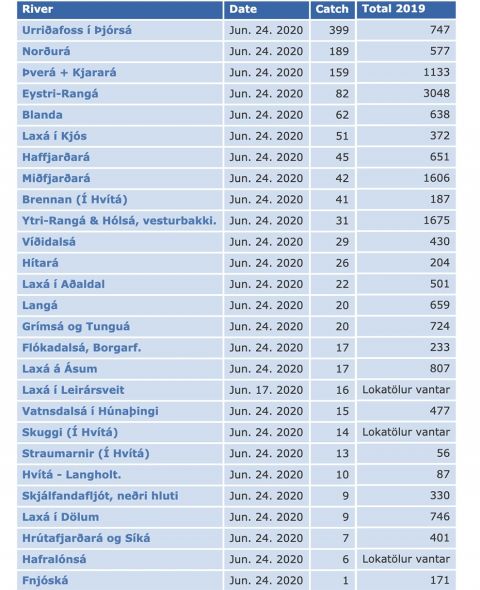Subscribe & stay up-to-date with ASF

While the international border between Canada and the U.S. remains largely closed, there have been some positive developments in other ways.
As of July 3, all of Atlantic Canada is joining in a collective “bubble”. For example, it will allow someone in Halifax to consider visiting salmon rivers in Newfoundland, Labrador or New Brunswick. Or a resident of Moncton who dearly loves the magical Margaree or other Cape Breton salmon river.
It is still an issue for someone in Canada from outside Atlantic Canada to get into the region.
For U.S. Atlantic salmon folks, the only real option is Iceland that is now open, as of June 15.. Lax-Á had a note on the latest development.
For scientists involved with assessment of Atlantic salmon and research into their issues and such, it remains very restrictive for government and university personnel. Some workarounds have been found that follow the health regulations, but in many cases 2020 is going to be a year with poor science results, overall. For example, in Newfoundland the assessment barriers appear to be largely absent – especially those requiring rebuilds each year.
And then there are boundary rivers. The St. Croix, an international boundary between Maine and New Brunswick, is still getting alewife monitoring thanks to video feeds. On the Restigouche, the largely sealed border between Quebec and New Brunswick is making things difficult.
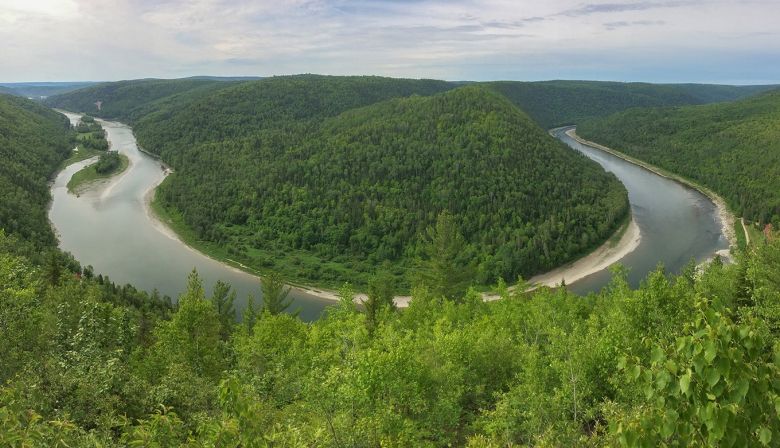
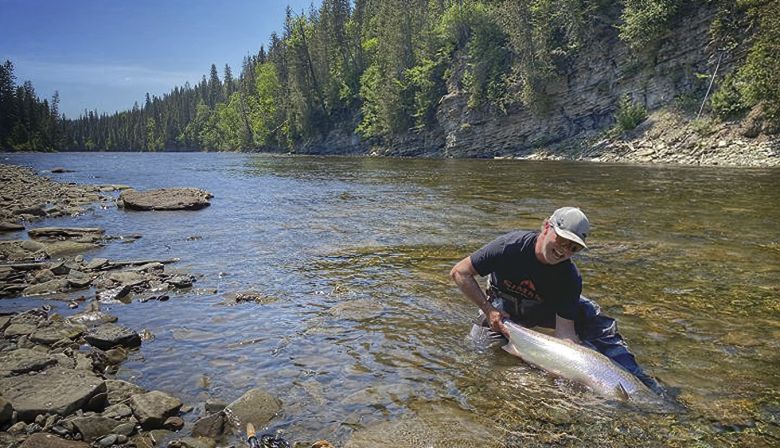
Charles Cusson, ASF Director of Quebec Programs notes:
Reminder to anglers fishing Quebec Rivers, take the time to report your releases to have accurate angling statistics and for the river managers to accurately calculate angling success. Tight Lines!
Mother Nature continues to be very difficult on river flows and air temperatures in Atlantic salmon country, but to date the salmon do not seem to be paying much attention to her. Rivers like the Grande Rivière, Cascapedia, Causapscal, York and Mitis are reporting a good to very good migrations of fish.
Don Bourgouin of GreyGhost Destinations checked out some of his favourite pools on the Grande River early this week and was very happy to observe a very low vacancy rate made up of 2-sea-winter fish.

Guylain Raymond of Causapscal Quebec has shared the fact the river is “full of fish” with a run of 15 lb class salmon, with a few grilse in the mix, appearing in sector 1 pools. On the downside, “my canoe is going to need a coat of paint at the end of the season” from all the dragging going on due to unusual very low water levels for June. Results on the “Causap” as people of the Matapedia valley call her, are very encouraging due to water temperatures remaining cold for the time being. To June 20, 90 fish have been landed including 43 released and 47 harvested which is almost identical to the same date last year.
The managers at the Mitis river are presently very happy with the early number of salmon that have been counted as of June 22nd through their trap consisting of 82 large salmon and 11 grilse. 4 salmon have been reported released.

On the North Shore, the Moisie received a bit of rain which had the effect of raising the flow to 620 cubic meters per second for a short while. Angling on the sector of the river the APRM manages continues to deliver good results, 49 salmon have been reported landed including 30 released, 17 harvested and 2 kelts.
To June 20th, the number of fish being landed on the Bonaventure has started to pick up despite the low water levels. To date, 21 salmon have been reported landed and released compared to 45 at the same date in 2019.

On the Matane as of June 22nd, 130 salmon and 9 grilse have migrated through the fishway. Compared to 84 salmon at the same date in 2019.
The Gaspé rivers continue to produce well despite the horribly low water. Hope is eternal at this point when consulting the weather network predictions for Amqui and Murdochville, two areas that feed water to many salmon rivers. Forecast is close to 30 mm of rain over the upcoming weekend that would be a welcomed injection of oxygen into the rivers.
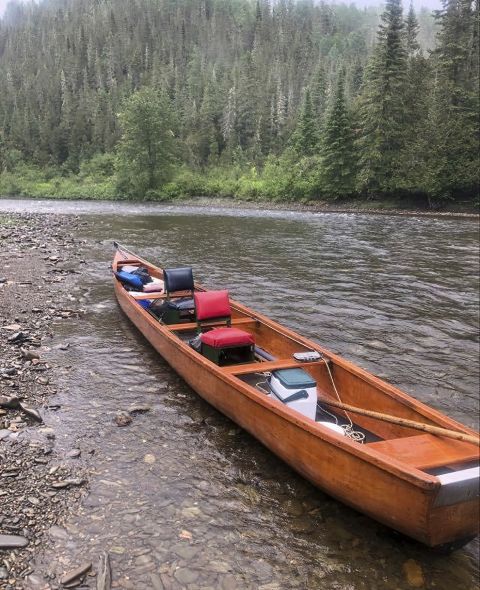
Rappel aux saumoniers qui fréquente les rivières du Québec, prenez le temps de signaler vos remises à l’eau afin d’avoir des statistiques de pêche crédibles et pour que les gestionnaires puissent calculer avec précision le succès de pêche. Tight Lines!
Dame Nature manifeste un caractère avare au niveau des précipitations en ce moment causant des débits de rivière très lents dans les régions saumon. Mais à ce jour, le saumon ne semble pas lui accorder beaucoup d’attention. Des rivières comme la Grande Rivière, Cascapédia, Causapscal, York et Mitis signalent une bonne à très bonne migration des poissons.
Don Bourgouin de GreyGhost Destinations a vérifié certaines de ses fosses préférées sur la Grande Rivière au début de cette semaine et était très heureux d’observer un fort taux d’occupation composer de saumon ayant passé deux ans en mer.
Guylain Raymond de Causapscal Québec a partagé le fait que la rivière est « pleine de poisson » avec une montaison impressionnante de saumons de 15 lb (avec quelques madeleineaux ici et là) apparaissant dans les fosses du secteur 1.
Cependant, « mon canot va avoir besoin d’une couche de peinture à la fin de la saison » en raison des niveaux d’eau très bas inhabituels pour le mois de juin ». Les résultats sur le « Causap », comme l’appellent les habitants de la vallée de la Matapédia, sont très encourageants en raison de la température froide de l’eau pour le moment. Au 20 juin, 90 saumons ont été pêchés, dont 43 relâchés et 47 récoltés, ce qui est presque identique aux résultats à la même date l’an dernier.
Les gestionnaires de la rivière Mitis sont actuellement très satisfaits du dénombrement de saumons qui ont franchi le piège au 22 juin sont composé de 82 grands saumons et 11 madeleineaux. 4 saumons ont été signalés relâchés par les pêcheurs sportifs.
Sur la Côte-Nord, le Moisie a reçu un peu de pluie qui a eu l’effet d’augmenter le débit à 620 mètres cubes par seconde pendant un court instant. La pêche dans le secteur de la rivière que l’APRM gère continue de donner de bons résultats, au 21 juin 49 saumons ont été pêchés, dont 30 relâchés, 17 récoltés et 2 saumons noirs.
Au 20 juin, le nombre de prises rapporté sur la Bonaventure a commencé de se manifester malgré le niveau d’eau très bas. À ce jour, 21 captures remises à l’eau ont été déclarées, comparativement à 45 à la même date en 2019.
La Société de gestion de la rivière Matane, indiquent sur son site web les statistiques suivantes pour les montaisons cumulatives en date du 22 juin. 130 saumons et 9 madeleineaux ont franchi la passe migratoire, comparativement à 84 saumons à pareille date en 2019.
Les rivières de Gaspé continuent leurs bonnes performances malgré les niveaux d’eaux terriblement basses. L’espoir est éternel à ce stade lorsque l’on consulte les prévisions de Météo Média pour Amqui et Murdochville, deux zones qui alimentent en eau de nombreuses rivières à saumon. On prévoit près de 30 mm de pluie ce week-end, ce qui fournirait une bonne injection d’oxygène dans nos rivières.
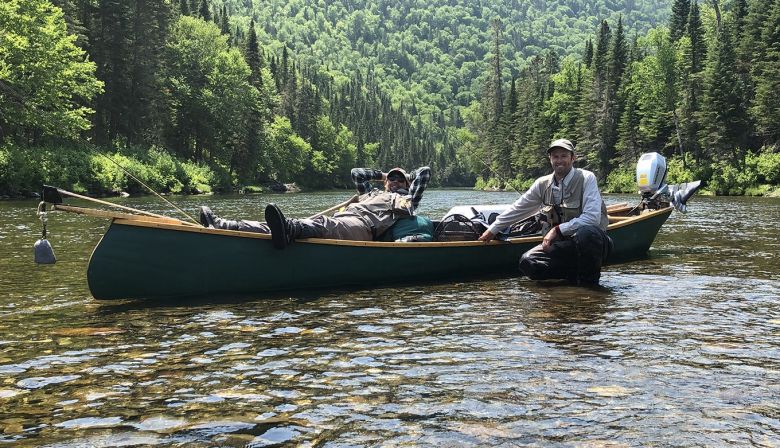
Angling Closure on Restigouche
Angling will be closed in portion of the Restigouche River starting at 11:00 a.m. and until 6:00 a.m. the next morning, every day until further notice, due to high water temperature. This closure will start Friday, June 26, 2020 at 11:00 a.m. and will remain in place until conditions improve, as per the strategy implemented for 2019 in cooperation with local partners to respond to warm waters conditions.
Here are the impacted portions of the Restigouche River:
Restigouche River, from a line drawn from grid reference 19 T 662058E 5317411N to grid reference 19 T 662048E 5318449N at Morrissey Rock upstream to the junction with the Kedgwick River. (North American Datum 1927)
Upsalquitch River, not including tributaries.
Nathan Wilbur, ASF Director of Programs for New Brunswick writes:
We’re seeing this strange mix of good numbers of salmon coming into some of the rivers, and absolutely terrible water conditions for June. The heat wave has left us dry for weeks and rivers are low and warm. Crown reserve stretches were shut down last Friday by DNR due to the extreme risk of forest fires. The good news is that salmon appear to be arriving in much better numbers compared to recent years and the forecast shows 4 good days of rain coming over the weekend and early next week. That should set up some great fishing, and get some much needed cool water flowing through the systems.
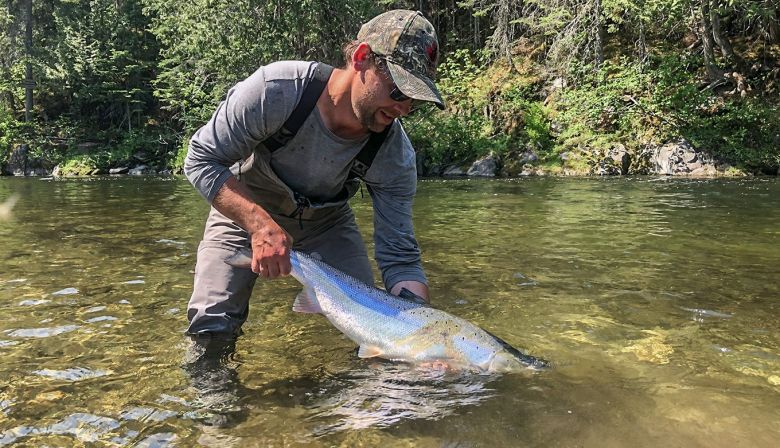
Although the DFO trap nets in the Miramichi estuary are not running this year, the Dungarvon and NW Miramichi barriers are up and running thanks to the Miramichi Salmon Association. The barriers were installed two weeks later than usual, and even missing those first two weeks, the NW barrier is showing far, far better numbers than last year.
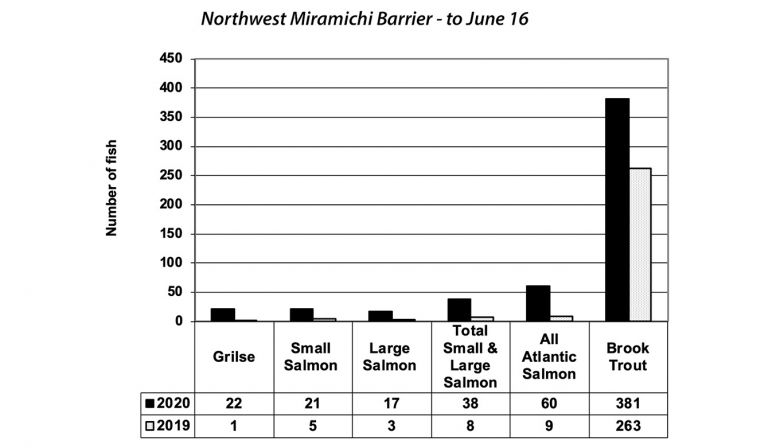
The number of Atlantic salmon to June 21 at the Dungarvon Barrier on this tributary of the Southwest Miramichi, by comparison, are roughly in line with last year, with 3 grilse and 7 large salmon this year compared with 2 grilse and 12 large Atlantic salmon to the same date.
Travel and Recreational Activity Restrictions and Crown Lands
The Following press release notes changes taking place as of June 25, 2020:
Natural Resources and Energy Development
Crown land partially re-opened
June 24, 2020
FREDERICTON (GNB) – The Department of Natural Resources and Energy Development is allowing limited activities on Crown land starting Thursday, June 25.
“The measures both industry and the public have taken by observing recent restrictions during this period of extreme fire hazard across the province are appreciated,” said Natural Resources and Energy Development Minister Mike Holland. “While the fire risk is still serious, we are taking a measured approach to getting back into the woods.”
As of June 25, recreational travel on or across Crown land will be restricted between noon and 8 p.m. Outside of these hours travel can take place but caution is still urged.
“The public is still urged to restrict travel and activities in private forested areas during this high-hazard time of day as well,” said Holland. “While conditions have improved slightly since last Friday, our forests are still extremely dry. It only takes one spark to ignite a large fire; that is why the restrictions put in place last week were so important and necessary.”
St. Croix River
The River Herring counts at the Milltown (St. Stephen, NB) fishway reached 600,525 on June 20, according to the St. Croix International Waterway Commission. The run is definitely slowing, and water temperature was 23.3 on 19 June, 2020.
Margaree
Greg Lovely writes:
We certainly need rain now.
As to salmon angling, there are still many salmon fishermen on the lower sections of the Margaree river this week. A good bump of water would be good to spread out the fish and fishermen.
It seems that a good run of salmon is entering the river and the first fish caught that I know of was on June 12.Here is hoping we do not have to close the Margaree river this year do to the increasing temperatures. If we do, I am glad the Margaree now has a warm water protocol and that DFO can monitor water temperatures remotely.
For anyone interested Warm Water Protocol can be found at Margaree Salmon Association’s website. Click here for the PDF
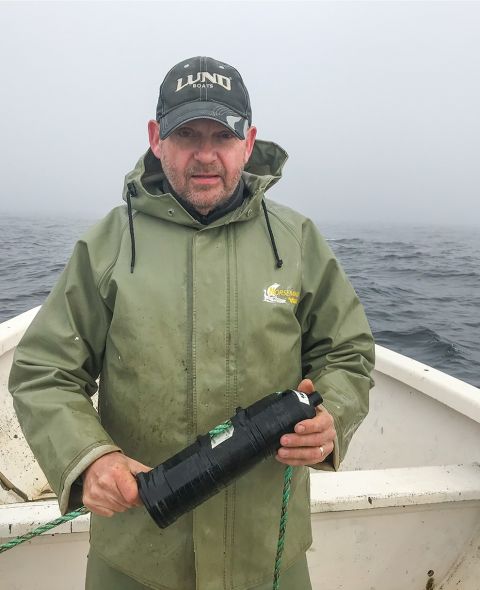
Don Ivany, Director of Programs for Newfoundland and Labrador, provides an in-depth overview of the island Atlantic salmon situation
During the past week or so anglers have been enjoying good fishing on most rivers throughout the Island of Newfoundland despite various river flows and weather. We are hearing that anglers have been hooking a fair number of large fish that are mixed in with grilse on many rivers.
It is still a little earlier for Labrador Rivers, but water levels and temperatures are good for this time of year and things should pick up in the next few days up there.
An overview of Newfoundland in past few days
High water levels on the Humber River finally receded earlier in the week to near perfect conditions for fishing. This combined with good water temperatures has been producing some great action at Big Falls and Little Falls since this past week-end according to reports from Humber Lodge Resort and local anglers.
However, an unusual heatwave during the past few days has resulted in air temperatures reaching 30 C. As a result water temperatures have since increased and now are at 18-21 degrees Celsius. This has slowed fishing, with morning excursions producing the best results.
Things are supposed to cool down over the next few days, and a little rain is expected, so hopefully the action will pick up again.
Anglers were also experiencing good success on Lomond River earlier in the week, but again, water temperatures have since spiked and things have slowed down at the moment.
In Southwestern Newfoundland anglers were reporting fair fishing conditions up to this past weekend, with good success on most Bay St. George rivers. However, the recent heatwave and low water has slowed angling. For example, the water level on Harry’s River is quite low at the moment at about 20 cms and water temperatures are at 18 C nightly and 22.5 C during the day.
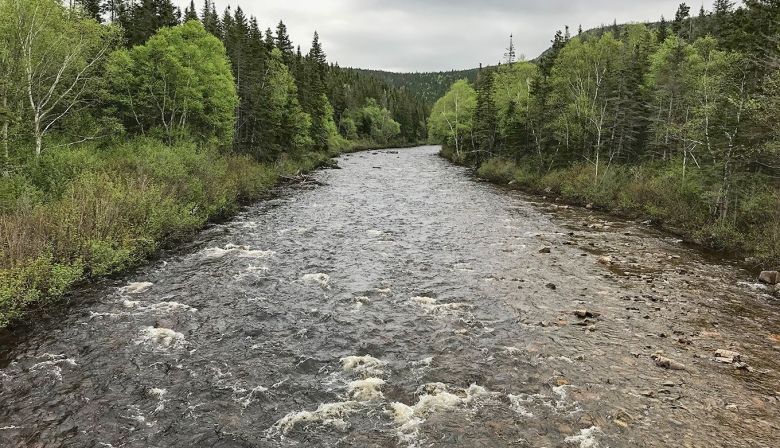
On the Northern Peninsula the weather has been much cooler so far this year and right now angling conditions are ideal. Anglers are enjoying good success on many rivers in this area currently, including Big East, River of Ponds, Castor River, Main Brook and Beaver Brook to name a few.
On the south coast of Newfoundland anglers have been reporting fair success until the heat and low water became pervasive. A heavy rainfall is desperately needed on Grey River, Garnish River, Pipers Hole, and many others.
The situation is quite similar on the Avalon Peninsula Rivers. Fair angling success due to low warm water has worsened during the past few days resulting in poor fishing conditions at the moment.
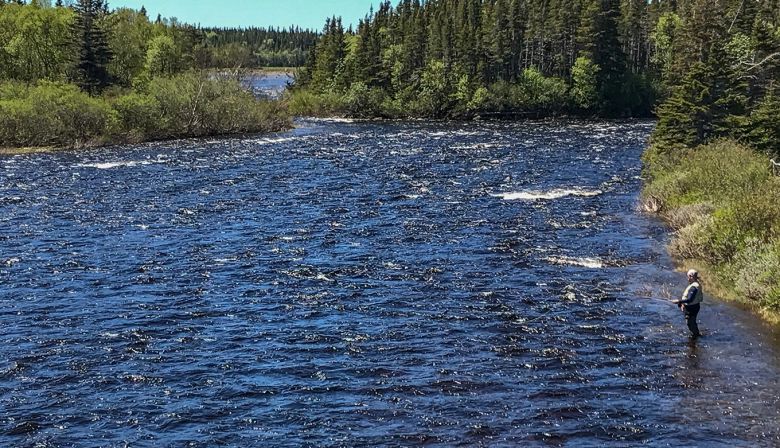
In Central Newfoundland the water level on the Gander River is still a tad high, 75 cms, for good angling and it’s still a bit early in the season for that river.
Greg Mesh, had a good day fishing on the lower section of the Gander earlier in the week. He released a large salmon and hooked three grilse. Dave Vardy fished the Raggot Harbour River earlier in the week and he also reports a good sign of fish. During his two-day trip he released a fish of 16 lb (one of the largest fish he’s known to be hooked on this river) along with several grilse.
Kim Thompson, with the Environmental Resources Management Association (ERMA) reports that the fishway at Bishops Falls on the Exploits River has been operational since June 18 and the fishway at Grand Falls was operational as of June 24. ERMA has the contract to operate both fishways. Kim reports that salmon are moving through both fishways which is a good sign. Anglers on the river are also reporting excellent fishing on the lower section of the river below Bishop Falls. ERMA is also hoping to begin operation of the Campbellton River fishway in the next week or so. This is good news since most fishways and counting facilities in the province are non-operational in 2020 because of the need for Covid-19 health protocols.
In Labrador water levels are still high on most rivers but are gradually dropping and should be ideal in a week or so if there is no more rain.
We have not received any reports of fish being caught but we expect things to pick up very soon on rivers like the Pinware and Forteau, and expect the same to occur on rivers to the north within a week or so.
In conclusion there certainly seems to be a good sign of fish returning to our rivers this year based on angling reports. If we can get the right angling conditions it should make for some good fishing over the next few weeks. So tight lines everyone and be safe!
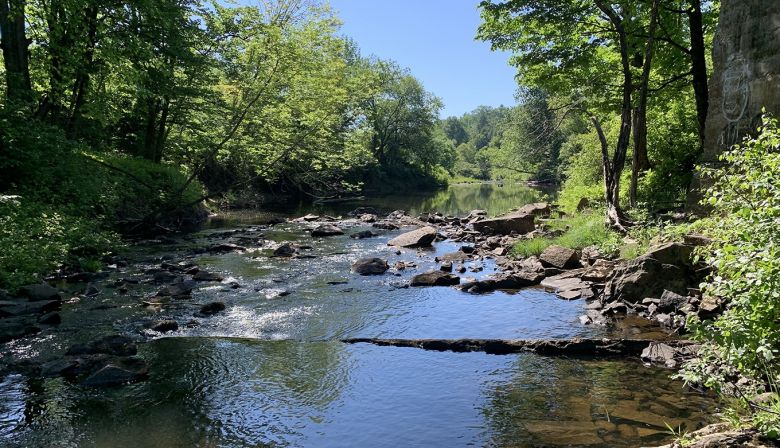
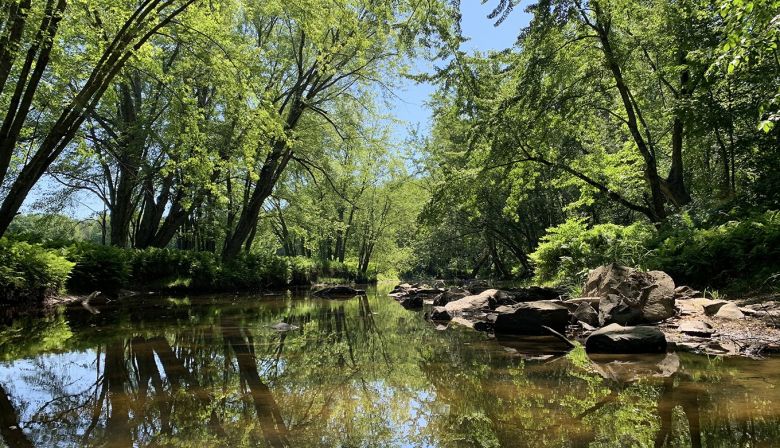
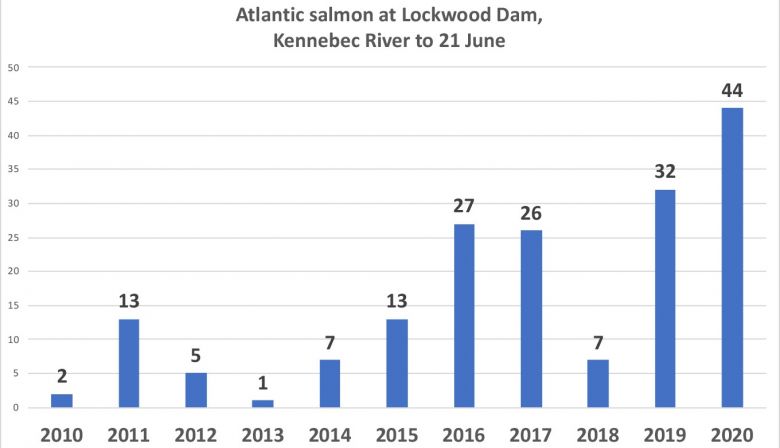
Jennifer Noll of Maine DMR writes of the Kennebec:
Not surprisingly, temperatures have risen to 23 degrees Celsius on the lower Kennebec this week. Again, flows are very low on the mainstem Kennebec. According to the USGS gauge in Sidney, current flow conditions are at 2,490 cfs, which is the lowest discharge recorded for this date based on 34 years of data.
Atlantic salmon catches are highest for this date in 2020 when compared with the last 10 year data series and since the fish lift was installed.
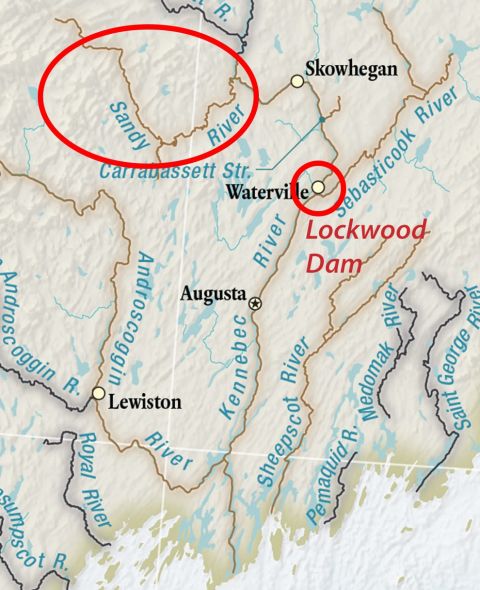
Penobscot
To June 25 there have been 931 Atlantic salmon at the Milford Fish Lift, and another 3 at Orono. However, for the past couple of days there have been none, according to Jason Valliere, Biologist with Maine DMR. The water temperature there is 24.7 C or 76.5 F.
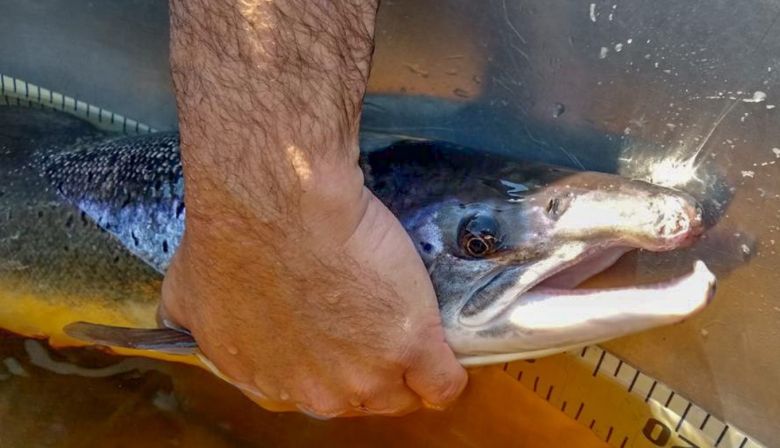
So far the angling in Iceland seems to be on the low side, but it is still early days. Note that Iceland angling is open to both U.S. and Canadian salmon anglers.
Check out http://angling.is/is/veiditolur/
The difficulty at the moment is finding a flight, with many flying into Keflavik Airport from European hubs like Frankfurt.
